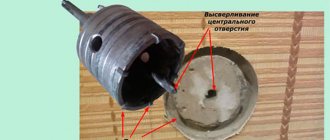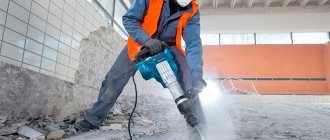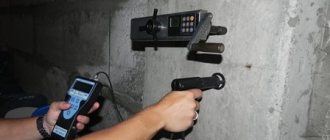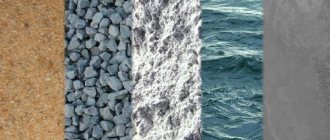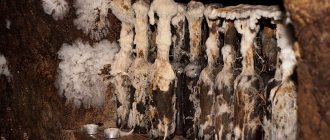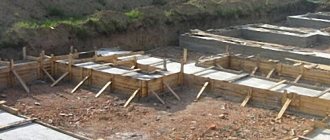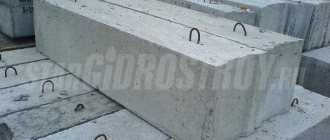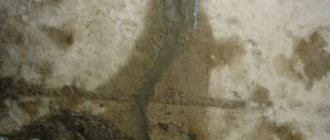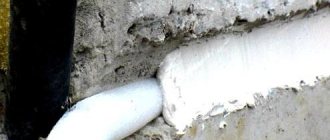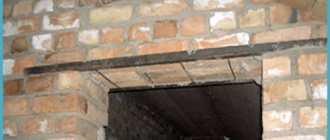How to remove moss from concrete and wood
A path made of paving slabs is an important element of the local area.
But over time, moss may appear on the paving stones, which completely ruins the aesthetic appeal of the landscape design. There is no need to get upset in advance. This is a natural process that can be dealt with in different ways and get a positive result. What methods exist to help get rid of moss on paving slabs? Using your hands to remove weeds is probably the most environmentally friendly way to remove weeds and moss from your driveway. Although removing weeds by hand can be very time-consuming and tends to cause back pain after hours of working on your knees. Quite often you can only remove some of the weeds by hand and find that the smaller weeds are difficult, if not impossible, to remove by hand.
You will be lucky if you manage to completely remove all traces of moss or weeds without leaving any trace of them. It all depends on how much weeds have sprouted on your covering.
Manual method
Heavily overgrown grass in the joints of paving stones can be removed manually, if possible, by tearing it out along with the roots.
Pros:
- inexpensive;
- environmentally friendly;
- helps against mature weeds.
Minuses:
- short-term effect;
- seeds may remain inside.
For work, it is convenient to use special L-shaped garden knives for cutting weeds (Fiskars, Wolf-Garten, etc.). This type of equipment is also sometimes called a “root remover” or “crevice cleaner”; it will help you reach grass even in the most difficult to reach places.
If you don’t have special equipment, you can use a thin spatula or a mounting knife to remove the grass.
It is advisable to remove weeds manually before the seeds ripen, and also to combine weeding with subsequent treatment with water or special liquids.
Using a pressure washer or high-pressure pump can wash the grass seed out of the joints. In addition, washing will also clean the tiles from dirt and dust.
Pros:
- effective against seeds;
- harmless to paving stones;
- the sidewalk is additionally cleared of dirt.
Minuses:
- helps in the short term;
- rising costs, special equipment required.
For these purposes, it is convenient to use a garden washer with a set of nozzles of different diameters, in particular, equipment from Karcher, Grunhelm, Intertool, Bosch, Stihl, Nilfisk, Makita, Sturm and etc. They operate under a pressure of 20-140 bar, with an average water flow of 250-500 l/hour, and are connected to a regular 220 V power supply.
It is necessary to ensure that the grout is not washed out too much from the seams; if necessary, sand or grout can be added after work.
Another good option is to pour boiling water over the joints 1-3 times, directly from the kettle.
Pros:
- the cheapest and most accessible way;
- affects both seeds and mature grass;
- harmless to tiles (if it is water and not fire).
Minuses:
- scalding often has to be repeated;
- does not always help against the most harmful weeds.
It is worth considering that the var may not give results the first time. For the best effect, it is appropriate to use boiling water, where eggs were boiled, or a hot soda solution (from 3-4 tbsp. L/liter).
But a burner for heat treatment is not recommended: despite its high efficiency, burning can severely damage the garden path.
This is the most effective option, “chemistry” kills weeds with a guarantee, although the method is quite harmful. It is convenient to use a spray bottle to apply medications.
Pros.
- completely destroys both weeds and seeds;
- This is basically a low cost method.
Minuses.
- can sometimes harm paving stones;
- affects neighboring crops.
First of all, you need to clean the path as much as possible from lichen mechanically (wet sand, brush, attachment to an angle grinder, etc.), then thoroughly rinse the tiles with a sink or hose, and then treat the surface with one of the following products:
- 10% solution of copper sulfate;
- solution of laundry soap (approximately 200-300 g/bucket);
- ordinary aqueous solution of table vinegar (1:1);
- a mixture of boric acid and borax (1:1);
- a store-bought moss remover such as Anti Mousses Guard or Medera Anti-Mold.
After exposure, the remaining drug is washed off.
Let's look at the main methods for removing surface contaminants in more detail.
- Mechanical method. The salt that appears on the surface of the concrete is removed using a hand-held metal brush or using a brush attachment mounted in the chuck of an angle grinder (grinder) or in the chuck of an electric drill. The method has a significant drawback - it damages the concrete surface. In addition, after a certain time, moisture penetrating into the thickness of the concrete will “push” out a new portion of salt and the process will have to be repeated many times;
- Chemical method. Treatment of efflorescence: hydrochloric, orthophosphoric, citric, acetic and other acids. The method is widely used in practice and is considered traditional. At the same time, acids, destroying the contact layers between the hardened cement and the filler, significantly reduce the strength and durability of concrete, and also sharply increase its water permeability. This leads to intense wind erosion, spoils the surface texture, surface color and does not meet the latest environmental requirements;
- Synthetic products. A modern, effective and safe way to remove efflorescence. The building materials market offers a wide selection of compounds to combat salt intrusion. In particular, you can use the commercially available universal efflorescence cleaners “STROYMOST”, “SCRAPER TEFLEX” and “ANTISOL WASHER”, which effectively remove not only the released salt, but also lime deposits and other contaminants.
After removing the salt deposits, it is recommended to treat the concrete surface with a water repellent. For example, the composition “PORTSEM”, intended for processing concrete, brick, “wild” and artificial stone, as well as paving and facade slabs. This operation increases the durability of the surface and improves the performance of concrete.
Removing paint
- Mechanical methods: removing paint with an ax blade and further cleaning with a wire brush, angle grinder or electric drill with special attachments, or a professional hammer drill. Disadvantages: high labor intensity, duration, severe damage to the surface, heavy dustiness of the premises;
- Chemical method. A special paint remover is applied to the surface, cured according to the instructions, after which the layer of softened paint is removed with a construction spatula. Disadvantages: in the case of several layers of paint, several repetitions of this operation will be required, harmful fumes;
- Thermal method. The paint layer is heated with a hair dryer. The softened paint is removed with a spatula. Disadvantages: requires special equipment (hair dryer), toxic fumes and fire hazard.
Moss removal
- Mechanical method. A wire brush or angle grinder or electric drill with special attachments (steel wire brushes);
- Washing the surface with a high pressure machine (partial removal);
- Combined method. Treatment with a special composition “Grön-Fri” to remove moss and lichen from any surfaces or with regular household laundry bleach. Subsequent mechanical cleaning or high pressure washing.
- Remove fresh oil with a paper towel or paper napkin. The stain is blotted and wiped in a circular motion from the edge to the center of the stain;
The old stain is sprinkled with adsorbents: caustic soda or cat litter. After waiting until the adsorbent absorbs the oil, it is removed and the surface is washed: with a degreaser for internal combustion engines, washing powder or liquid soap. In case of heavy contamination, the operation is repeated several times.
We invite you to familiarize yourself with a reliable detergent for washing membrane clothes
A good-quality and very beautiful garden path, lined with paving slabs, is a real decoration of a personal plot. However, over time, grass may grow through the cracks and seams on the paving stones or moss may appear.
Weeds on the path spoil all the charm of the landscape design: the path becomes less aesthetically pleasing, and besides, it is more difficult to walk on neglected tiles.
Therefore, let's look at the main ways to clean garden tiles from weeds and moss, as well as measures to prevent their occurrence.
Manual method
Moss is a perennial plant that does not have roots, so it often forms near the ground. As a rule, the best conditions for its growth are a shaded place, high humidity, and an open area. It reproduces by dividing spores and can reach a height of about 50 cm.
Very often, with its help, you can give your garden plot an additional cover, which serves as a separate decorative element. But when moss begins to appear on paving slabs, it already brings some trouble, since it only spoils the appearance.
Weed control is not difficult. There are several effective ways to help get rid of growths. Since it has no root, this can be done quite easily. But it is worth remembering that even after cleaning, spores may remain on the surface of the tiles and in the cracks, which will again provoke the growth of moss in the future. It is for this reason that it is important not only to remove it, but also to prevent its occurrence in the future.
It should be noted right away that there are a lot of tips on the Internet on how to get rid of moss on paving slabs, which involve the use of folk recipes: vinegar, salt, soda and others. Of course, these substances have helped more than one housewife in everyday life, and they sometimes act quite effectively. But moss is not cleaning home surfaces, it is a controversial plant, and if you approach its removal irresponsibly, then you won’t have to wait long for new growths.
Mechanical method
Remove weeds from the pavement by hand
Using your hands to remove weeds is probably the most environmentally friendly way to remove weeds and moss from your driveway. Although removing weeds by hand can be very time-consuming and tends to cause back pain after hours of working on your knees. Quite often you can only remove some of the weeds by hand and find that the smaller weeds are difficult, if not impossible, to remove by hand.
You will be lucky if you manage to completely remove all traces of moss or weeds without leaving any trace of them. It all depends on how much weeds have sprouted on your covering.
How to get rid of moss on concrete and paving slabs using simple and affordable means
Mechanical method
- garden knives;
- assembly knife or spatula;
- grinder with an appropriate abrasive attachment;
- hoe;
- wire brush or sandpaper.
The whole principle of this stage is to scrape off the growths using one of the tools. The sharper it is, the better the cleaning result. In some cases, you can combine some means. For example, remove the moss with a sharp spatula or garden knife, and then further treat the area with sandpaper or a metal brush. You need to act carefully so as not to damage the paving slabs.
Once the area is cleaned, all surfaces are treated with chemicals that kill the spores and prevent further moss formation.
Chemicals are quite effective at removing moss. It is extremely important to remember that such compositions also negatively affect nearby plants. For this reason, before processing, all plants must be covered with a protective film, and the person must wear a respirator, safety glasses and a suit.
The most effective means include:
- Ammonium nitrate. A solution is prepared in the ratio of 1 kg of powder per 10 liters of water and all cracks in the paving slabs are treated. After 5 days, the procedure should be repeated.
- Herbicide-based products. They fight not only growths, but also weeds. Among the most popular are “Roundup”, “Chistopol”, “Tornado”, “Hurricane”. The use of any composition must be strictly according to the instructions. You should also monitor the weather - there should be no rain in the next two days.
- Borax. You need to dilute 350 grams of the substance per 10 liters of water. The solution is sprayed onto the paving slabs using a spray bottle.
To prevent the reappearance of moss on paving slabs, you need to create unsuitable conditions for it: trim trees and bushes that shade the area if possible, and also take care of drainage, which will reduce the level of humidity on the path.
Question
Hello! How to remove moss and grass from the joints of paving slabs?
“MOX – STOP” – SOLUTION AGAINST MOSS AND ALGAE
A mossy roof, moss in the seams of paving stones, a monument overgrown with moss, green yard posts and the fence itself, unsightly green and slimy stains on garden furniture - these are just a few examples of what almost all of us face every day. In any case, the formation of moss, lichen and algae outside their natural habitat on various structures is unacceptable and must be eliminated.
One of the ways people most often try to get rid of moss, lichen and algae is by mechanical removal from the surface on which they grow. Typically, the green cover is scraped, scratched or knocked down with a high-pressure jet. Despite the fact that in this way it is possible to immediately achieve an attractive appearance, in fact micro residues and spores remain on the surface, which after just a few months are restored again and the surface begins to “green” again.
In addition, mechanical treatment can lead to damage to the surface, for example, knocking down pebbles of asphalt shingles. That is why, since the spring of 2014, a locally produced product “Mox-Stop” has been available, with which you can successfully get rid of moss and algae on roofs for several years , walls, fences, facades, paths, monuments and other places where they appear.
WHAT YOU SHOULD KNOW ABOUT “Mox-Stop”:* “Mox-Stop” moss remover is not classified as an aggressive chemical and is harmless to the environment and people. However, during the treatment process it is recommended to use a respirator so as not to provoke irritation of the respiratory tract; * The solution only affects the green mass of algae and moss, without causing harm to plants, shrubs and lawns;
as a result of the action of “Mox-Stop”, algae and moss gradually become yellow and then brown;* After treating the lichen cover with “Mox-Stop”, it does not visually change even after several weeks, but it turns into a mass that crumbles like dust;* The product does not leave stains on the treated surface, since it does not contain metals, and also does not change color and does not spoil building materials, since it does not contain chlorine or acids;
* If you purchased a concentrate, diluting it with water, allow the resulting solution to sit for 10-15 minutes to achieve a uniform consistency; * After treatment with Mox-Stop, it is important that the surface does not come into contact with sediment for 5-6 hours; * For the best result, before starting treatment with Mox-Stop, there is no need to mechanically clean the surface so that the solution can act on the entire mass of moss;
We invite you to familiarize yourself with Methods for removing diesel fuel stains from clothes, a review of specialized products
* Mechanical cleaning must be performed no earlier than 10-14 days after treatment - when the moss becomes brown, dry and turns into a loose mass. It is very important to do this in places where the moss grows in a thick and dense layer, because precipitation will not be able to “stir” such a large mass of moss;* The process of cleaning roofs is best done in the autumn-winter-spring period, since at this time the most precipitation, which naturally helps get rid of dead moss parts.
Especially important for mossy roofs. However, this is also very useful in summer to stop the development of moss. If you cleaned in the spring, for better results before the onset of winter, you can re-treat the surface with Mox-Stop. By spraying algae, moss and lichen with Mox-Stop, the product affects the entire living mass of microelements, completely destroying it viability.
Depending on the thickness of the “green” layer, it turns brown within a few days or weeks, dies and crumbles. Residues from the surface can be cleaned with a soft brush, rinsed with water, or wait until precipitation does it for you. It is easiest to clean if there has been intense sun for several days in a row and the moss has dried out.
However, it should be remembered that precipitation cannot wash away a large mass of moss from the surface, so you must do this yourself - especially from horizontal surfaces, for example, paving stones. If necessary, a thicker layer of moss can be re-treated with Mox-Stop. After high-quality treatment with “Mox-Stop”, a new layer of moss or algae will not appear on the surface for at least several years. IMPORTANT!
Surface treatment with “Mox-Stop” should be carried out if there is no forecast of precipitation for the next 5-6 hours, otherwise the precipitation will be washed away and the applied solution will dissolve. In autumn or spring, it is recommended to carry out treatment in the first half of the day, since high humidity at night and morning dew will dilute the concentration and partially wash away the applied solution.
You should also ensure that there are no frosts at night, which can reduce the effectiveness of the solution. In turn, in summer, the most suitable time for treatment is late evening, when the sun is no longer so hot. The hot summer sun and hot air will evaporate substances containing water from the “Mox-Stop” solution, and the product will not be able to affect the moss.
In turn, the solution applied in the evening, in the cool of the night, will retain moisture and influence on the moss until the morning. About the guarantee: As a result of correctly and efficiently performed treatment, you will completely clean the surface of moss or algae. Each geographical location has its own specific environment - amount of sun or shade, proximity of trees or forests, prevailing types of winds, etc.
Even the environment of objects located at a distance of 200-300 meters from each other can be completely different. Therefore, in each place the time for moss restoration is individual - in some places moss can appear within a year, in other places - after 5-6 years. However, in our climate zone the average period is 3-4 years.
In fact, “Mox-Stop” guarantees that you return the treated surface to the initial “0 point”, when the surface was new and completely free of spores. “Mox-Stop” moss and algae remover can be purchased in two forms - as a concentrate or as solution, ready to use with Spray nozzle.
4 (1 part “Mox-Stop” 4 parts water) You receive 5 liters or, respectively, 25 liters of ready-made solution, which can be used to treat at least 25-30 m 2 or 125-150 m 2. In case of questions or uncertainties, you can always get consultations with the manufacturer RK69 Grupa LLC. Tel: 371 29 696969, www.mox-stop.lv
“Mox-Stop” FOR ROOFS – used for all types of roofing
“Mox-Stop” FOR STONE, CONCRETE – for processing paving stones, facades, pillars, concrete fences, decorative stones and other stone surfaces
“Mox-Stop” FOR FACADES – suitable for cleaning PVC, siding, wooden facades, board fences, terraces and other wooden or painted wooden surfaces
Some weed killers may be environmentally friendly, such as Algon, which specializes in killing specific weeds while leaving other plants unharmed, while others will kill all types of vegetation they come into contact with.
If you want to remove weeds from your natural stone pavers, you can use bleach to keep your pavers clean. But have you noticed how expensive weed killers have become?
I'm no gardener, but I once heard a respected guy with tinted green fingers talk about making a free organic weed killer using rhubarb leaves.
They were left to rot in a bath of water until the entire mass became liquid, after which the liquid was poured onto the weeds. Unfortunately, I have never seen such a product on sale! If you purchase a weed killer for your driveway or patio, you should always follow the manufacturer's instructions.
Liquid weed killer
Some weed killers may be environmentally friendly, such as Algon, which specializes in killing specific weeds while leaving other plants unharmed, while others will kill all types of vegetation they come into contact with.
If you want to remove weeds from your natural stone pavers, you can use bleach to keep your pavers clean. But have you noticed how expensive weed killers have become?
I'm no gardener, but I once heard a respected guy with tinted green fingers talk about making a free organic weed killer using rhubarb leaves.
They were left to rot in a bath of water until the entire mass became liquid, after which the liquid was poured onto the weeds. Unfortunately, I have never seen such a product on sale! If you purchase a weed killer for your driveway or patio, you should always follow the manufacturer's instructions.
Some weed killers will require dilution with water, while others come ready to use and do not require dilution before applying to the weeds. For best results, always apply herbicides to weeds and moss while they are actively growing—the leaves will absorb the herbicide through the green leafy parts as they grow.
The leaves then carry the weed killer to the root of the plant, ensuring that all of the weed is removed, not just the leaves.
6 ways to remove weeds and moss from paving slabs
Take a look at 6 different ways to remove weeds and moss from paving slabs and surfacing. This also includes steps you can take to make sure the weeds don't come back after cleaning.
There are several ways to remove weeds and moss from road surfaces.
Weeds growing on your slabs or pavers are unsightly and can cause long-term damage by raising or widening gaps in the pavement. This can ultimately cause the pavement to sink lower into the ground and become unsightly.
You can remove weeds and moss from the pavement after they have grown. But it is always better to take preventative measures to stop the growth of weeds and moss.
Remove Weeds and Moss from Pavers with These Methods
We'll look at 6 ways to completely remove moss and weeds from your flooring. You can take any of the following measures to remove weeds and moss, or you can combine several methods to provide complete weed control.
Take a look at 6 different ways to remove weeds and moss from paving slabs and surfacing. This also includes steps you can take to make sure the weeds don't come back after cleaning.
There are several ways to remove weeds and moss from road surfaces.
Weeds growing on your slabs or pavers are unsightly and can cause long-term damage by raising or widening gaps in the pavement. This can ultimately cause the pavement to sink lower into the ground and become unsightly.
We suggest you familiarize yourself with a good remedy for sweaty feet
You can remove weeds and moss from the pavement after they have grown. But it is always better to take preventative measures to stop the growth of weeds and moss.
We'll look at 6 ways to completely remove moss and weeds from your flooring. You can take any of the following measures to remove weeds and moss, or you can combine several methods to provide complete weed control.
Using a hose with a nozzle, brush off all the moss from the roof.
Carefully place the ladder near the moss growth area, wear non-slip shoes, old clothing, rubber gloves, and eye protection (you may want to additionally secure yourself with a safety rope). Rinse the roof area with clean water, spraying at an angle downwards. Next, use a soft-bristled, long-handled brush to remove moss from the roof, brushing from top to bottom to avoid lifting the shingles. Proceed carefully—don't scratch, scrape, or bang the roof—and work one small section at a time to avoid tearing, cracking, or breaking the shingles.
Photography – shutterstock
How to get rid of moss on concrete and paving slabs using simple and affordable means
Where does moss come from?
Most often, moss appears in areas with high humidity, especially on the north side.
Moss spores carried by the wind, once in a favorable environment, take root and begin to rapidly multiply.
In a matter of weeks, paving slabs or the wall of a house become covered with an unsightly layer of moss. These plants perfectly absorb and retain moisture, so the surface of the concrete under a layer of moss will always be damp.
Excess moisture over time will inevitably lead to its cracking and destruction, and therefore mossy vegetation must be gotten rid of as soon as possible
Armed with a spatula, scraper, metal or plastic brush, begin to carefully and methodically remove the green islands of unwanted vegetation.
Having cleared the surface area of moss, rinse it thoroughly with water and meticulously evaluate the results of your work.
Even microscopic remains of a moss colony remaining on the concrete surface must be removed by repeated cleaning, otherwise the surviving moss spores will grow again, turning the surface of the paving slabs into a soft green carpet.
Using a high-pressure washing machine greatly simplifies the process of getting rid of moss. In this case, you can completely get by with water alone without the use of chemicals and detergents.
Mechanical cleaning does not always give the desired results, so to ensure that unwanted vegetation is removed, it makes sense to use chemicals.
The oldest and most proven moss remover is copper sulfate.
Treat the problem area with a solution of copper sulfate (500 g / 10 l of water). The product will saturate the unwanted plant layer right down to the roots, destroying its viability.
If there is a thick layer of moss, it may need to be re-treated with a solution.
After a week or two, the plants will turn yellow, die and dry out. All that remains is to sweep them off the concrete surface with a brush or wash off with a stream of water.
In addition to copper sulfate, chlorine-containing liquids, for example, bleach for washing fabrics, will help deal with moss colonies.
Dilute 1.5-2 liters of bleach in 10 liters of water. The procedure for using it is the same as for copper sulfate.
You can prepare a moss remover yourself by mixing equal amounts of vinegar and water.
In the end, you can generously and repeatedly pour boiling water over the problem surface. The effect will be no worse.
To avoid the reappearance of moss, remove nearby tree branches and bushes if possible.
By improving air circulation and opening access to sunlight, you will not leave mossy vegetation a single chance.
The leaves then carry the weed killer to the root of the plant, ensuring that all of the weed is removed, not just the leaves.
Deep cleaning
Superficial removal is only the beginning of the work, as the most difficult lies ahead. Removing large layers of moss is required precisely to clear space for access to the spores and roots. Although moss does not have a developed root system as such, its spore legs and feet are held quite tightly, so simply sweeping them out cannot be gotten rid of.
At this stage you will need a coarse abrasive, which is what the wire brush was prepared for. With its help, it is necessary to clean the area that has been previously cleared of the main layers of moss. During the cleaning process, you will notice how layers of dirt appear, followed by the surface of the concrete. The goal is to ensure that vegetation and dirt are completely cleared from the work area.
My tomatoes are juicy and large. Fertilizing helps to achieve such a harvest.
“Meet the new artist MALFA - MÁYRUN”: Fadeev introduced a new artist
The stern captain Kazakov from “Soldiers” is a faithful husband. His wife is beautiful
2. Burn the weeds with a butane stick
One easy way to remove weeds and moss from your driveway is to use a handheld gas torch to burn off the weeds and moss. This tool is called a butane stick. This is a good way to kill weeds, especially between the joints of paving slabs. There is no need to squat to remove weeds - the wand with a long handle allows you to operate the burner while standing.
Using a gas weed torch is safer than using chemicals. After you burn the weeds, they die within 1-2 days. Children and pets may be allowed on the road surface immediately after using the burner.
An added benefit is that you can also use the tool to de-ice any frozen surfaces during the winter months. The gas cartridge is simply screwed onto the manual mechanism and the flame burns. The long handle allows you to stand while you burn off the weeds. You can buy a variety of gas blowtorches for killing weeds at discounted prices in the garden section of Amazon.
Weed removal tool
Using a hand tool to remove weeds makes the process much easier.
They are available for purchase in various shapes and sizes. Some of the best-selling weed and moss removal tools make it easy to remove large weeds. They also allow you to quickly and easily remove small, hard-to-reach weeds and moss. This is an excellent way to remove weeds and moss from cracks and joints in sunken paving surfaces such as pavers.
Using a paver scraper is a great way to remove weeds if you want to take an eco-friendly approach to things.
They are very effective when used to clear and dig out tough weeds from pavements and crevices. You can purchase a telescoping version of the weed remover that will allow you to remove weeds while you stand.
Electric weeding
At first, the idea of using an electric weeder to remove moss and weeds from the road surface seemed like a bit of a stretch.
But for those who have difficulty bending, an electric weeder can help remove weeds and moss from the road surface. The lightweight, hand-held, purpose-built machine features a rotating wire line that sweeps away weeds. The rotating wire line removes moss and weeds as they grow along the pavement seams. Replacement tips are readily available for purchase.
This is an especially good tool when it comes to removing moss from hard-to-reach paving slabs.
Fighting reasons
First: if the cause of the pest is excessive soil moisture, the soil must be dried. This can be done very simply: add a certain amount of sand to the top layer of soil and mix it with the ground. Next, you should dig small ditches to drain excess liquid, and also make sure not to artificially moisten the soil. To do this, it is recommended to minimize regular watering and irrigation.
Second: if the basis for the growth of the aggressor plant is increased acidity, then it will be necessary to enrich the soil with lime mortar or a dry mixture. This can be done in the spring, calculating fifty kilograms of this substance per hundred square meters of land. In the fall, instead of lime, you can use dolomite flour or wood ash, generously sprinkling (or moistening) the affected areas with it. This procedure should be used in non-rainy, windless weather.
How to get rid of moss in a garden plot if its appearance was caused by constant shadow? First of all, plants that do not like sunlight can be planted in this place. Over time, they will eliminate the moss and its spores on their own. If the shadow comes not from a tall building or significant structure, but from a large pile of unnecessary materials, then it is necessary to move them to another place or dispose of them.
How can you fertilize the soil if it has been revealed that the lack of fertilizing has provoked the appearance of a pest? First of all, it is recommended to use mineral products rich in ferrous sulfate, nitrogen and others.
It is very important to ensure that such feeds do not contain phosphorus and similar elements.
And one more tip: it is very important to carry out regular weed control, since such as wormwood, winch, nettle and sedge can contribute to the appearance of moss and other pests. Systematic weeding and complete disposal of weeds will help not only put an end to the green aggressor, but also prevent its occurrence.
So, we have looked at simple but effective ways to get rid of moss in your garden. Now let's briefly discuss methods for eliminating this pest from greenhouses and conservatories.
Use a pressure washer
Using a pressure washer to remove weeds is not a recommended method for removing weeds from pavement due to the damage that can be caused when using a pressure washer for a long time.
If you want to continue using your pressure washer to clean and remove weeds from your driveway, then why not consider using a driveway sealant after your next cleaning! The sealant will harden the sand, which will help stop the damage caused if a pressure washer is constantly used to remove weeds.
By using a power washer, you can seriously destroy the underlying sand structure in materials such as paving slabs. This leads to water ingress and loss of foundation strength, ultimately causing the pavement to sink into the ground.
However, using a regular power washer or a power washer is a popular and very effective way to quickly remove moss and weeds from paving joints.
Surface cleaning
The work begins with removing large layers of moss that has grown on the site over a long time. This is a simple procedure that can be done with a spatula. It will be good at working over a large area if you need to select layers in large parts.
The taste of tea will be simply incredible: prepare spruce sugar
A friend treated me to crab salad with cottage cheese: a delicious and summery combination
Looks like my cat isn't happy. Photos of animals that don't like the cone on their neck
You may also need a small knife at this stage. In particular, for cutting layers rooted in the soil between the tiles. Water also softens the structure of the moss, so by wetting it you can count on even easier removal of the layers.

